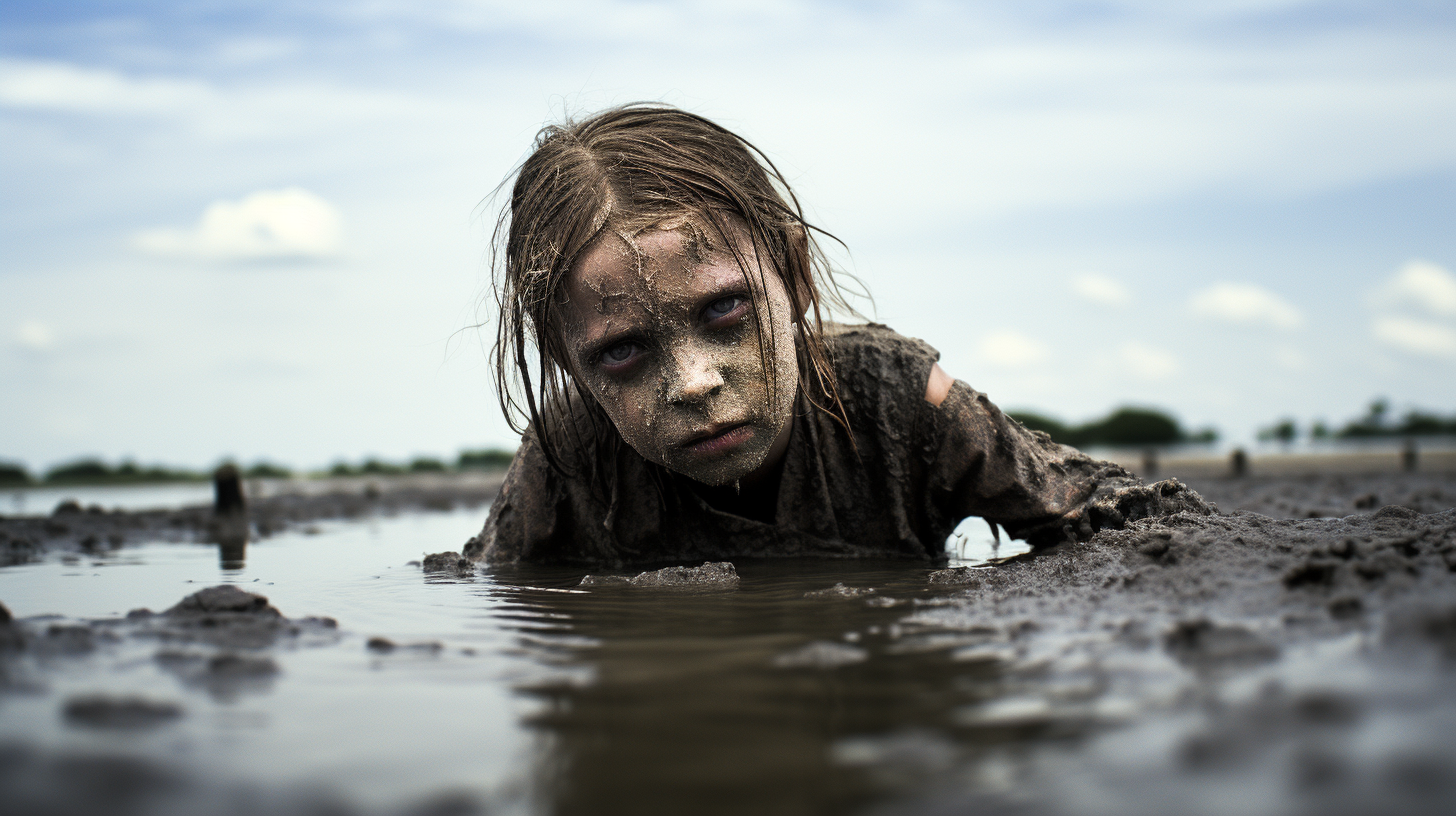In the sprawling deserts that were once fertile plains, humanity now grapples with a new menace. The relentless sun bears down on a barren Earth as Aridity’s Children, the cunning diseases born of endless drought, take root in the parched remnants of civilization. Thirst, once a mere discomfort, has become a harrowing prelude to affliction.
As the remnants of lakes and rivers now gasp under a merciless sun, communities survey their cracked foundations, once brimming with life but now only breeding grounds for vectors of disease. Zika, Dengue, and Chikungunya are but a few of the names in a long register of ailments that, like unwelcome specters, visit the thirst-stricken populace with rising indifference to the change of seasons.
The Epoch of Thirst is not just dry throats and wilting crops; it is the baleful mother of infection. Mosquitoes, with fewer and fewer sources of clean water, fester in stagnant ponds, the last vestiges of moisture. With no escape from the heat, humans and vectors alike are drawn to these putrid oases. In the malicious swirl of evolution, these mosquitoes have become nightmarishly efficient in their quest for blood, now their own kind of desperate drought-survivors. The Aedes genus, in particular, has proven to be an insidious companion to despair.
Further complicating the situation is the advent of airborne diseases. Dust, once the domain of the harmless tumbleweed, now carries more than folklore’s whispers. Valley Fever, caused by the spores of Coccidioides, finds itself on wind currents that extend its reach far beyond its traditional confines. These spores, invigorated by climate-induced mutations, threaten to transform even the routine act of inhalation into a gamble with mortality.
Health infrastructures falter as Hyperthermia and Heat Stroke add their weight to an already overburdened system. The sun, a once life-giving force, now feels like an omnipresent oppressor, its embrace lethally warm. In our world’s cruel inversion, the sun’s wrath is both a direct assailant and an abettor to infectious agents.
These conditions, viewed through the lens of history, are reminiscent of the Dark Ages, but with a twist of irony so sharp, it could cleave hope in two. In those times, water was a source of disease; now its absence commands an equally devastating toll. Societies once united under flags are now sub-divided into factions seeking refuge in the dwindling alcoves of shadow. Tribal medicine re-emerges, not as a romantic nod to our ancestors but as a dire necessity, a clutching at straws as the medical establishment recedes like the mirage of water on the horizon.
The most gut-wrenching aspect, however, is the silent acknowledgment that this need not have been our destiny. Forgotten warnings from decades past echo in the hollow canyons that once sang with flowing water. Technology’s promise lies broken; our hubris shattered against the stubborn bedrock of Earth’s own limits.
‘Aridity’s Children’ are the harbingers of a new dark age, where thirst is not just for water, but for a reprieve from sickness. Laughing in the face of desalination plants turned relics and rain harvests now a myth, one cannot help but ponder the circulatory systems of our body, mirroring a planet now devoid of its own lifeblood. We stand together, yet isolated, a collective of solitary figures under an uncaring sun, carving out existences in landscapes that whisper of lush green memories, now just fossilized beneath our feet.
The challenge now before us is not to quell the thirst, for that seems a fool’s errand in our desiccated reality, but to mitigate the dire consequences of This Epoch of Thirst. To turn away from the sun’s scorn and find solace in the ingenuity of survival, an ingenuity borne out of desperation yet giving rise to a new form of resilience and, perhaps, wisdom.
But let us not beget illusions of redemption within this narrative; our story is one foretold by the ailing gasps of rivers and articulated by the desolate echoes in dry wells. We are chronicling the opera of our decline, singing a requiem for the blue planet. And as we etch our accounts into the annals of a parched Earth, we might just inspire a distant tomorrow where sapient beings ponder the ruins we’ve left behind and avert the footfalls that led us to our own undoing.
In this landscape of relentless aridity, we are the authors of our own fates, the unwary architects of Aridity’s Children. Our tales, not to impart hope but to serve as solemn reminders, for the epochs still carry our whispers, however dry they may now be.
